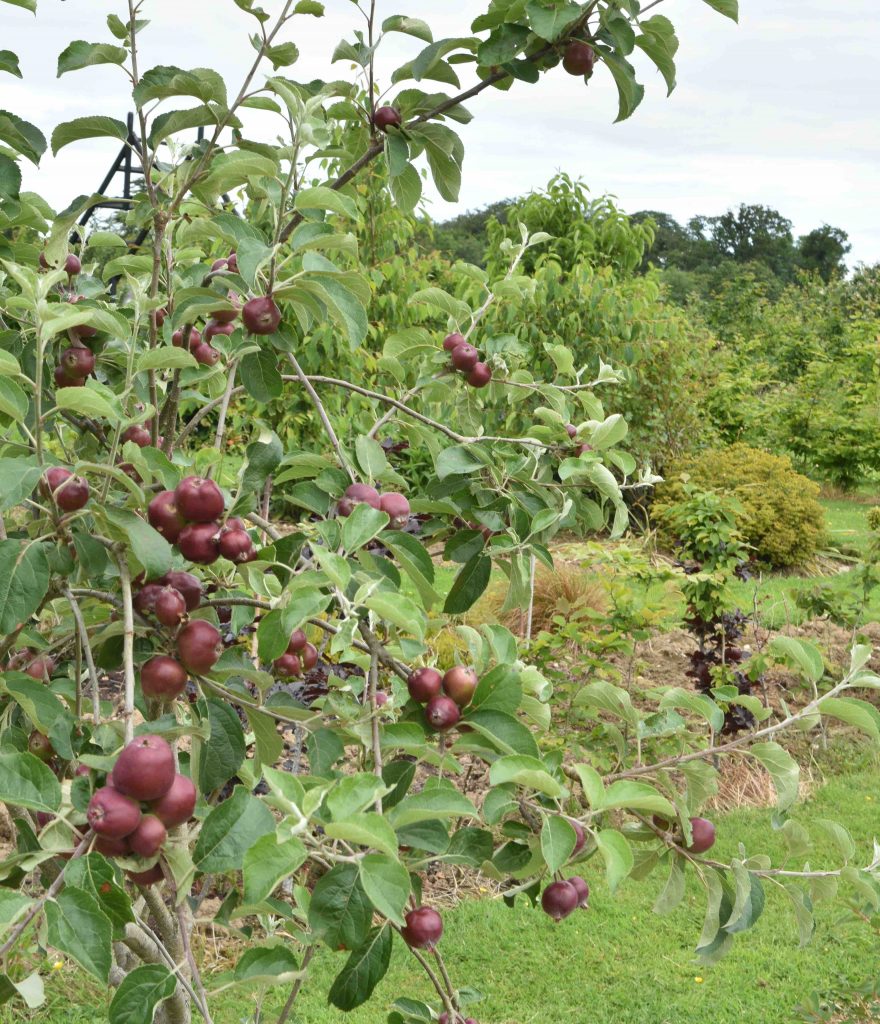
Most people grow a few fruit trees or want to and it is very rewarding. After the initial cost of planting later expense is minimal and the plants can crop for many years. In my own plot I am growing as wide a range of fruit as I can and that way, I am hoping that at least some will succeed. By far the most popular tree fruit for home gardeners are apples. This is largely because they are tolerant of the widest range of conditions, they flower late in spring so are rarely troubled by very late frosts and there is a wide variety of kinds to suit every taste.
Plums and pears are less reliable and have their own issues and cherries too, are more problematic. This year I have no plums because the bullfinches ate every flower bud and I only have one pear on the three (different) pear trees because of late frosts. But most of the apples are doing quite well and I had a good set of fruit on most of them.
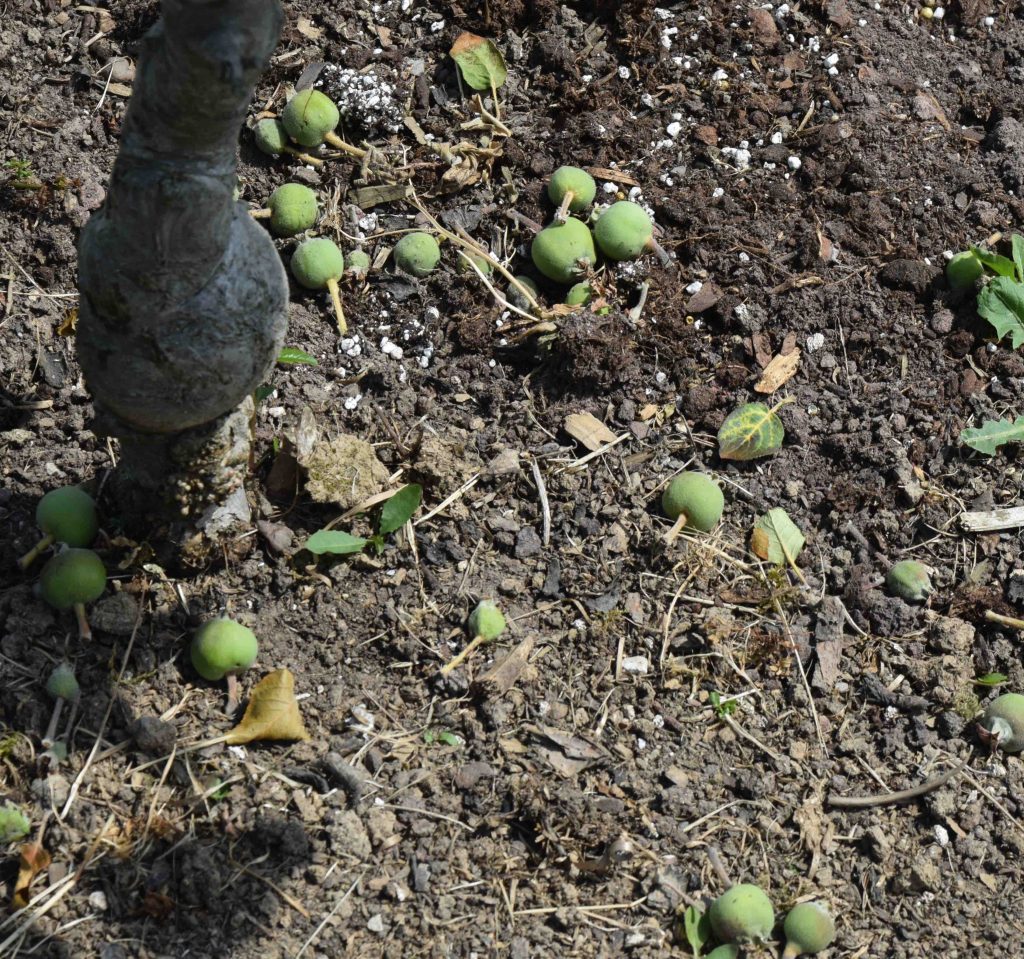
The recent warm and dry weather coincided with the occurrence of ‘June drop’. This is alarming for new gardeners because suddenly lots of small fruit drop off the trees. It is perfectly natural if spring was kind and lots of fruits formed and it is the way the tree copes with a bumper crop that it could not possibly bring to maturity. It is always more severe in a dry season. Once you are sure that the natural thinning of the fruits is over you can then go over the trees and thin further to reduce the clusters of fruit to no more than three per group so each has enough room to grow to maturity.
Because of the dry weather there may be other problems on your apples such as mildew. This affects the new foliage which becomes narrow, distorted and covered in white spores. There is no chemical treatment and the best way to control it is to prune out the worst-affected shoots.
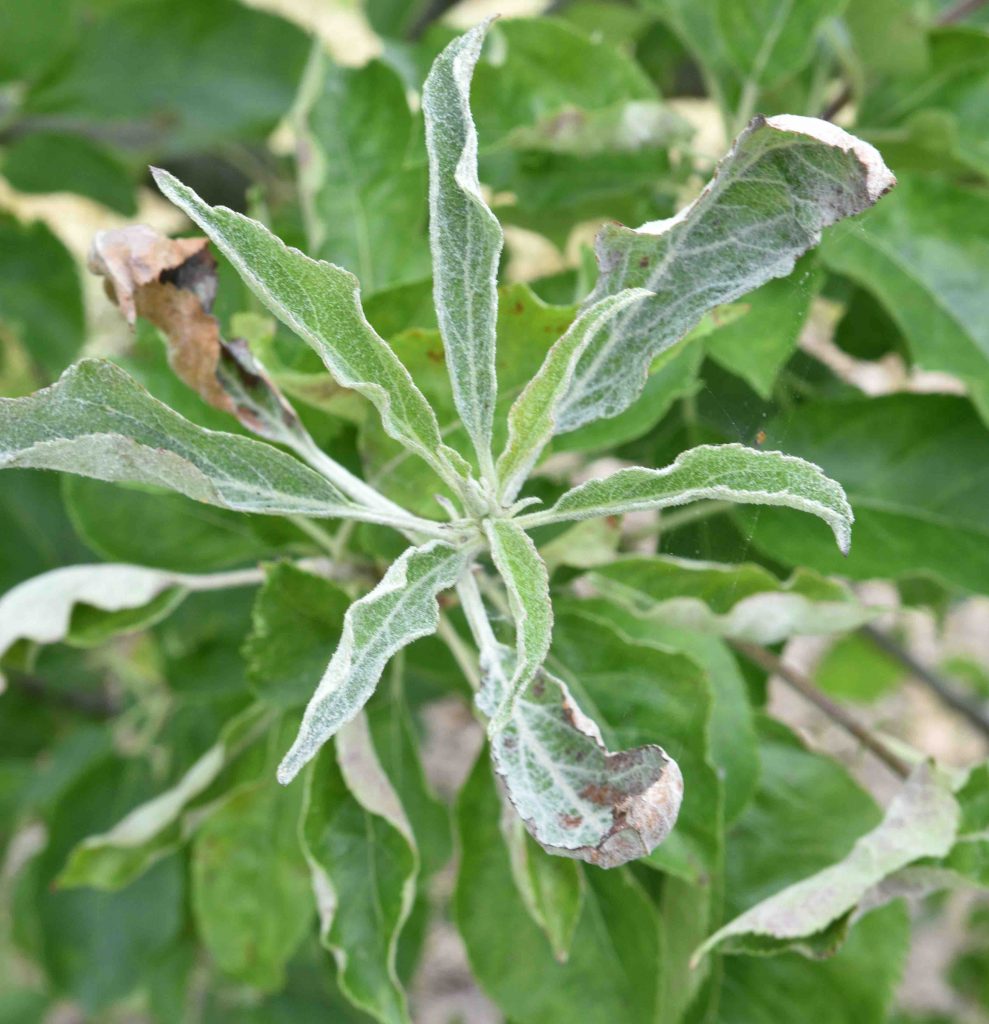
The warm weather meant it was a bumper season for strawberries. Although they are not without their own problems, strawberries are worth growing because they crop so quickly. My strawberry beds are now in their second summer and they will be left for one more year before they are replaced. This is easily done because, as soon as the fruit is picked, they send out ‘runners’ which are rooted to make new plants. This is also a great time to plant some new strawberry plants because these will have time to grow this summer and get established and will crop well next year. If you do not have room for a strawberry bed you can grow them in pots or a traditional strawberry pot. If you do use these, a problem can be to water them evenly and I put in a one litre plastic bottle in mine to help get water to the bottom of the pot.
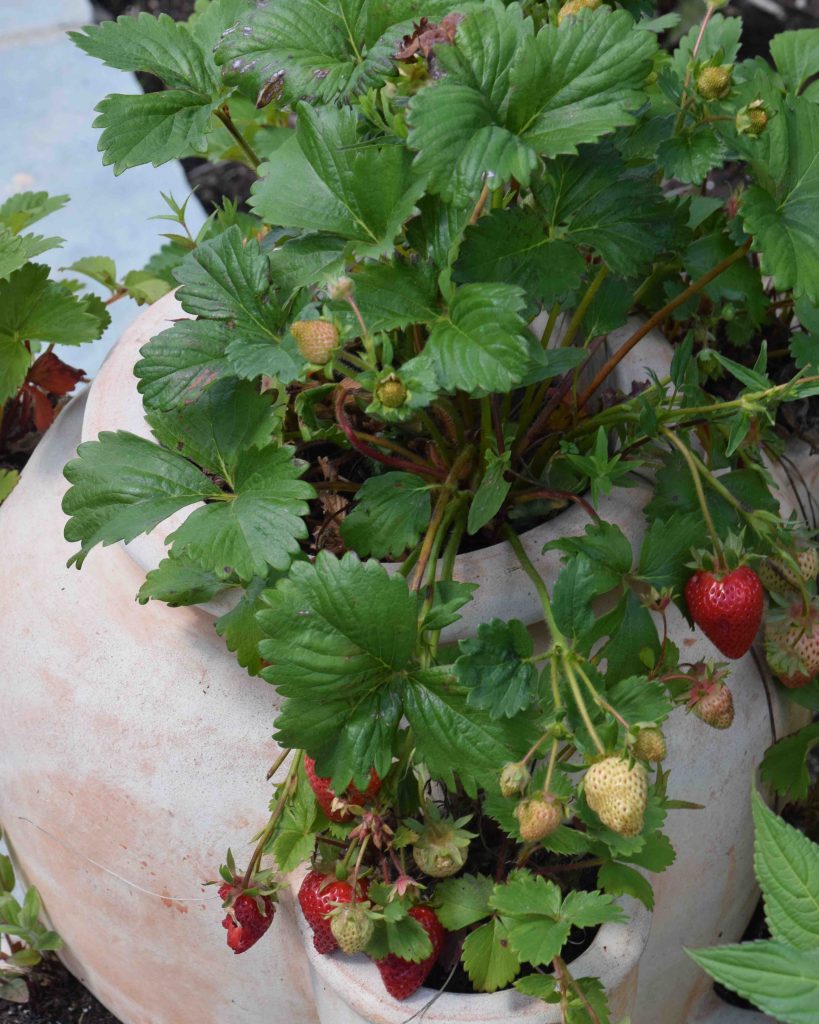
You can grow grapes in a greenhouse or poly tunnel (as I do) or against a sunny wall. There are many varieties that will ripen in an average summer and these even include seedless kinds. They can be planted now. But whichever you choose, they need pruning in summer to control growth and expose the fruits, as they develop, to sun and air which helps to reduce mildew. As a general rule, cut off the ends of the shoots, two leaves after each bunch of fruits, and then do the same with subsequent shoots. All major pruning, of old shoots, is done in the depths of winter, usually in December.
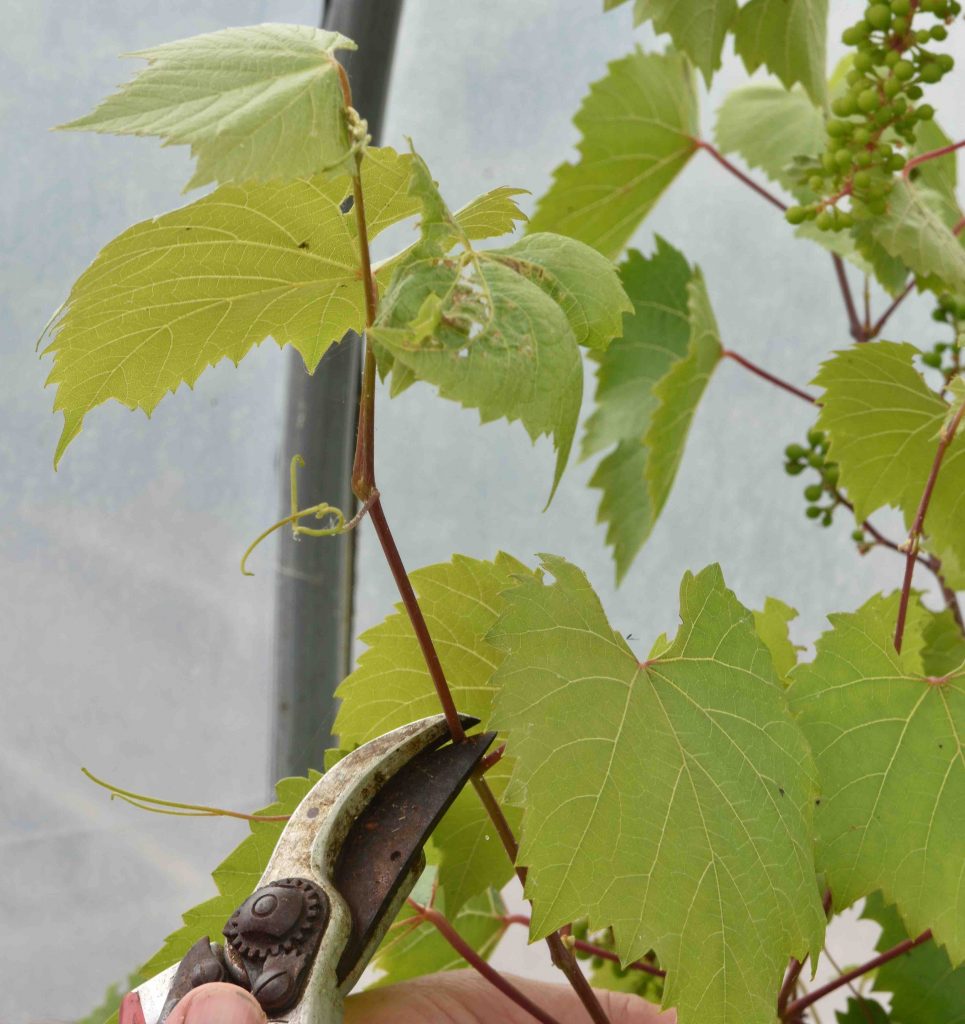
Other jobs for this week
Stake tall dahlias and give them a feed. Water in dry weather and remove dead flowers
Cut lavender for drying as soon as the first flowers start to open.
Sow seeds of biennials such as forget-me-nots and sweet Williams to bloom next year
Remove any flower stems from rhubarb. You should stop picking rhubarb now so that the plants have time to grow for the rest of summer.
This is the last chance to sow peas and dwarf French beans to get a crop in autumn.
And don’t forget to keep picking courgettes so they do not get too big! Pick them small and they will keep producing lots of small, tender fruits.